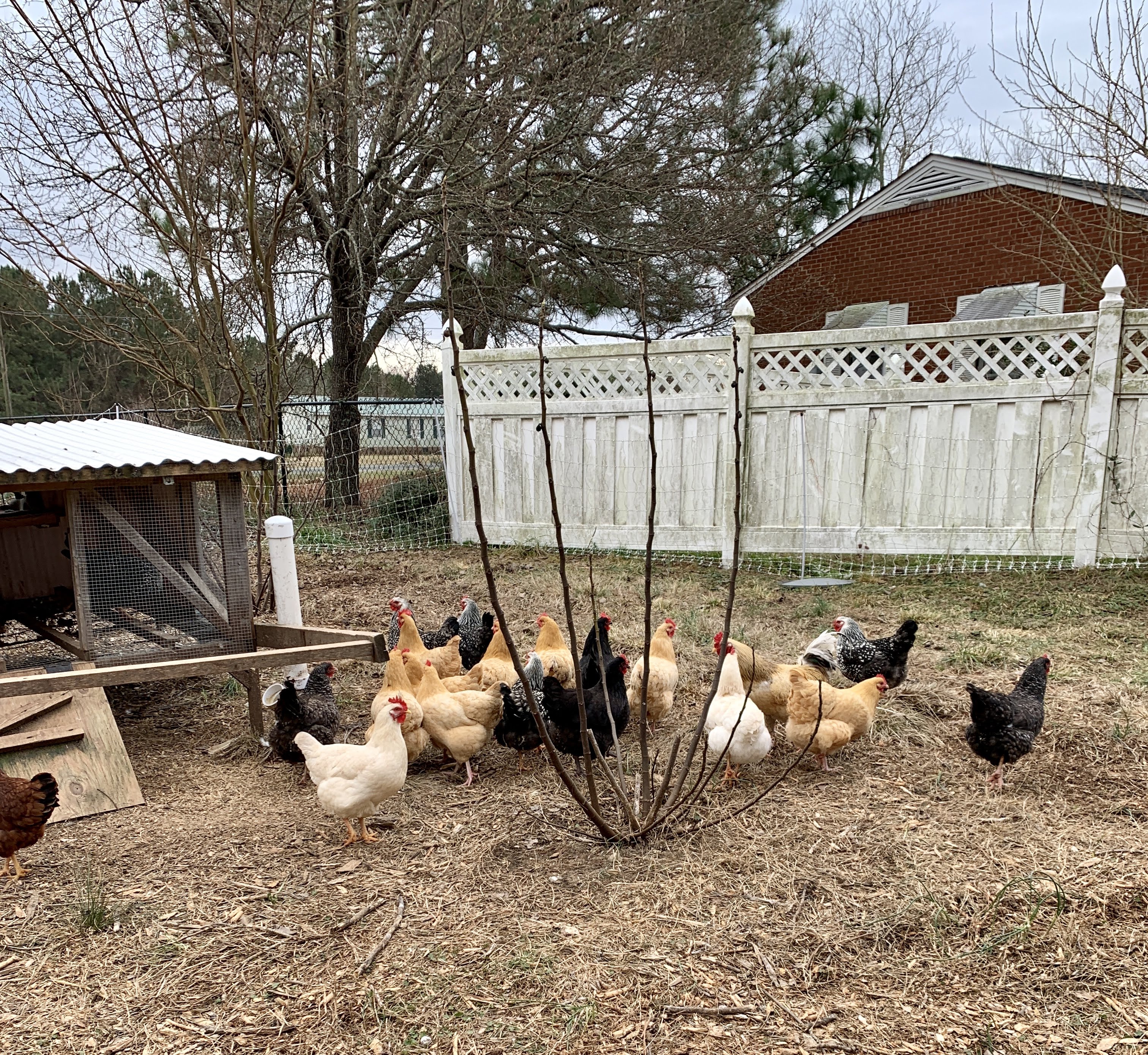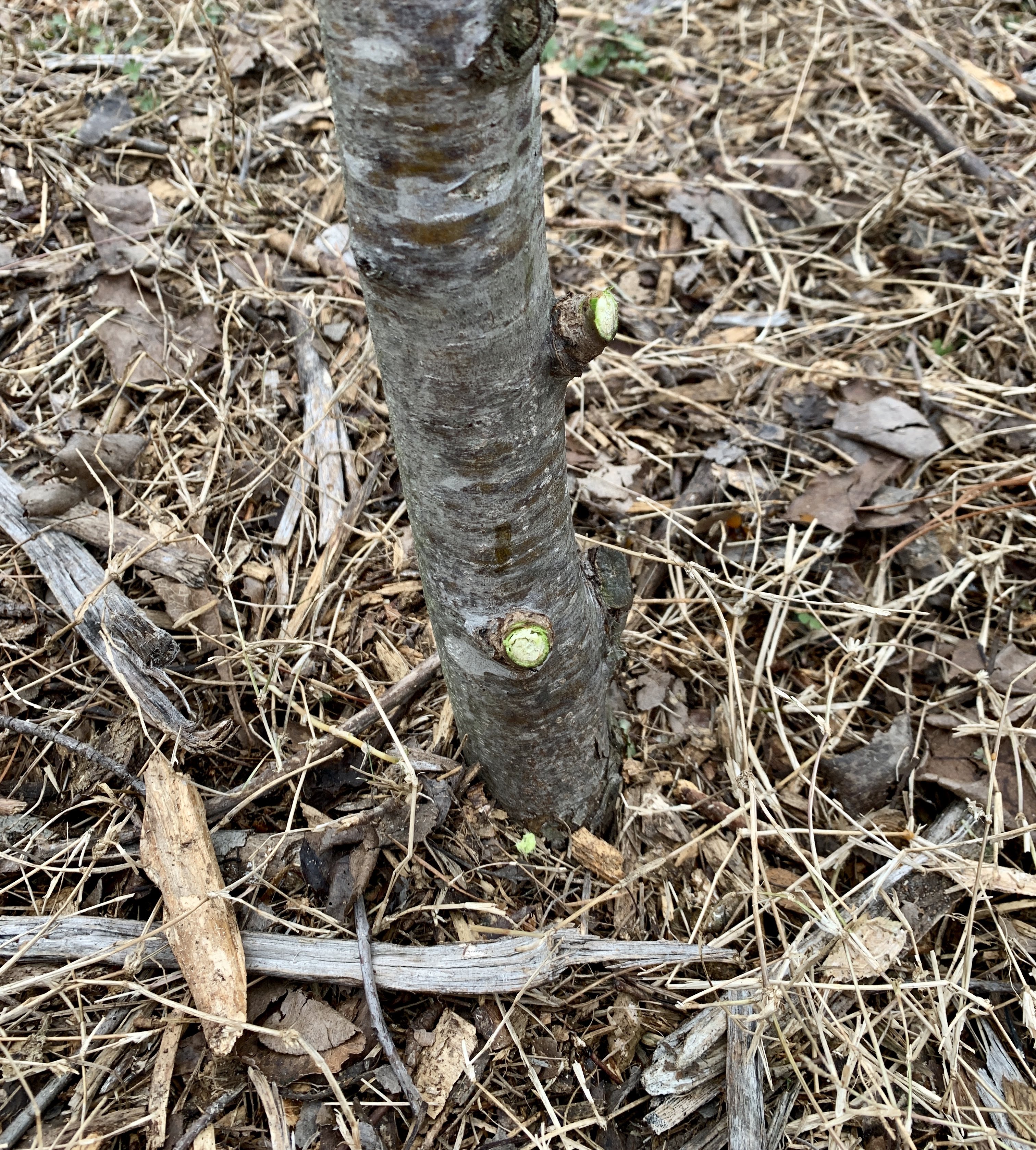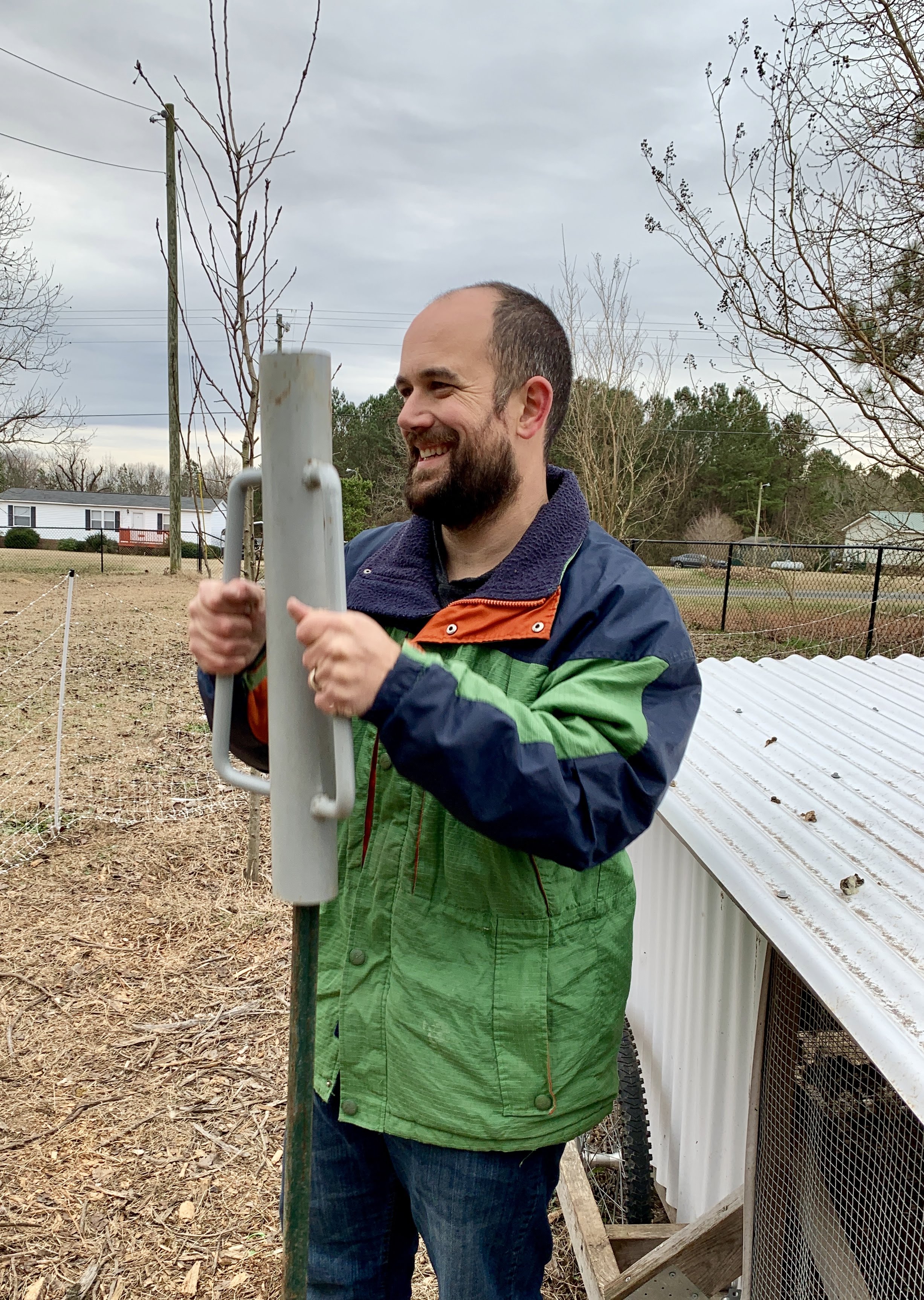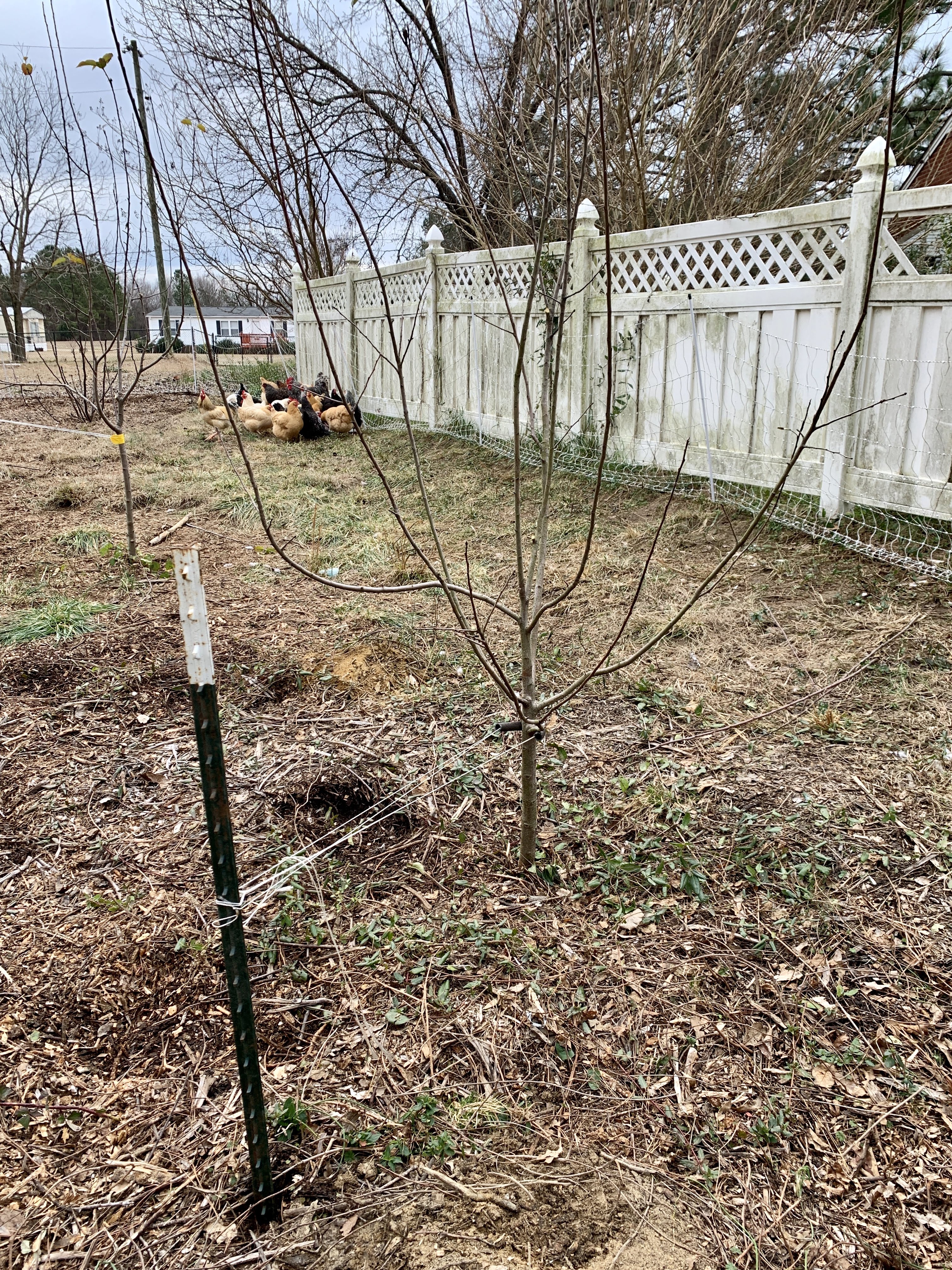
Winter Orchard
2019-01-19
Even if I knew that tomorrow the world would go to pieces, I would still plant my apple tree. – Martin Luther
All our fruit trees and bushes are sleeping and that means it is time for winter pruning and clean up. Not to mention the fact that since we planted our trees in March 2017 they’ve weathered 3 official hurricanes. Some of them were feeling a little wind blown. As they are sleeping, we could also invite the chickens in to do a little housekeeping (eating bugs and weeds) and fertilizing (self explanatory I hope). In the above picture you can see their mobile coop and one of our two fig trees. The fig trees did great last year and I learned lots of valuable lessons about the speed at which ants can devour a ripe fig if you say, “Oh, I’ll pick that one tonight.” Also that Corra can eat a season’s worth of figs by herself, no problem.

First off though, this pear tree. It is a less common type called a Seckel Pear and I choose it because it cross pollinates well with the other variety we have (Moonglow) and both are fire blight resistant. I wish I could say it is immune, but alas, within a month of planting it had contracted the dreaded blight and we had to prune it all the way back to 2-3 off shoots. We even had to take the leader (the central main branch) in order to stop the bacterial infection from spreading. It’s not a fantastic picture but I’m beyond thrilled at how this tree has bounced back and is looking full and vibrant (Well, as vibrant as a fruit tree can look in the middle of the winter).


One of the most important things we needed to do was prune sucker branches that were growing up from beneath the graft line. {incoming fruit tree biology lesson in 5…4…3…2…} Most domestic fruit trees are branches that have certain qualities that have been grafted onto root stock that has other qualities. The biggest traits controlled for are over all size of the grown tree and disease resistance. The root stock will sometimes send up branches that will ultimately have different characteristics that the rest of the tree if left to grow. This is bad because it diverts resources that could otherwise be put into growing fruit you actually want from the grafted branches. All of our trees will be semi-dwarf ranging from 10-18 feet tall if we follow our current pruning plan.

Speaking of a pruning plan…we also needed to trim out branches that would grow across other branches and we needed to generally thin out the center of each tree to allow better airflow and light penetration.



Did I mention the hurricanes? Yeah. About that. Some of our trees really needed new support so we drove t-posts and got them trained up straight. It feels so good to not have our poor trees looking like they are about to fall over.

Again, this picture isn’t fantastic but it’s going to be spectacular when these 11 blueberry bushes are all grown and producing like crazy. Last summer our chickens got to them before we did, dumb birds, but this year we can net the bushes in and the birds out.

Including our resident snow bird (Meyer Lemon Tree that winters in our kitchen), This is what is currently included in our orchard:
- 2 Elderberry bushes
- 2 Paw-Paw trees
- 2 Figs
- 1 Asian Pear
- 4 Pears (2 Moonglow and 2 Seckel)
- 6 Apples (2 Gala, 2 Honeycrisp, and 2 Granny Smith)
- 11 Blueberry bushes
- 3 Chokecherry trees
- 1/4 acre wild black berry brambles
- 1 Pecan tree
Here are some numbers: Let’s fast forward about 5-10 years when everything is grown and producing and let’s pretend that one year the planets align to create the most perfect fruit growing conditions ever. Assuming each of the figs and paw-paws could give about 25 lbs per tree, the pears and apples could produce 3-6 bushels at 48 lbs each, and the berries would give about 2 gallons per plant/tree, and lets say we get 4 gallons wild blackberries (which I did our first summer here). That year our little orchard would yield about 1600-1800 lbs of fruit and 30 gallons of berries over a 4 month span.
So I guess if you happen to visit in 5-10 years during the summertime, make sure to come hungry.
(The opening quote is attributed to Martin Luther, but there is no record of it in his actual writings. I love the quote so am choosing a willful suspension of disbelief for the sake of relating a lovely way of thinking about the importance of planting trees)